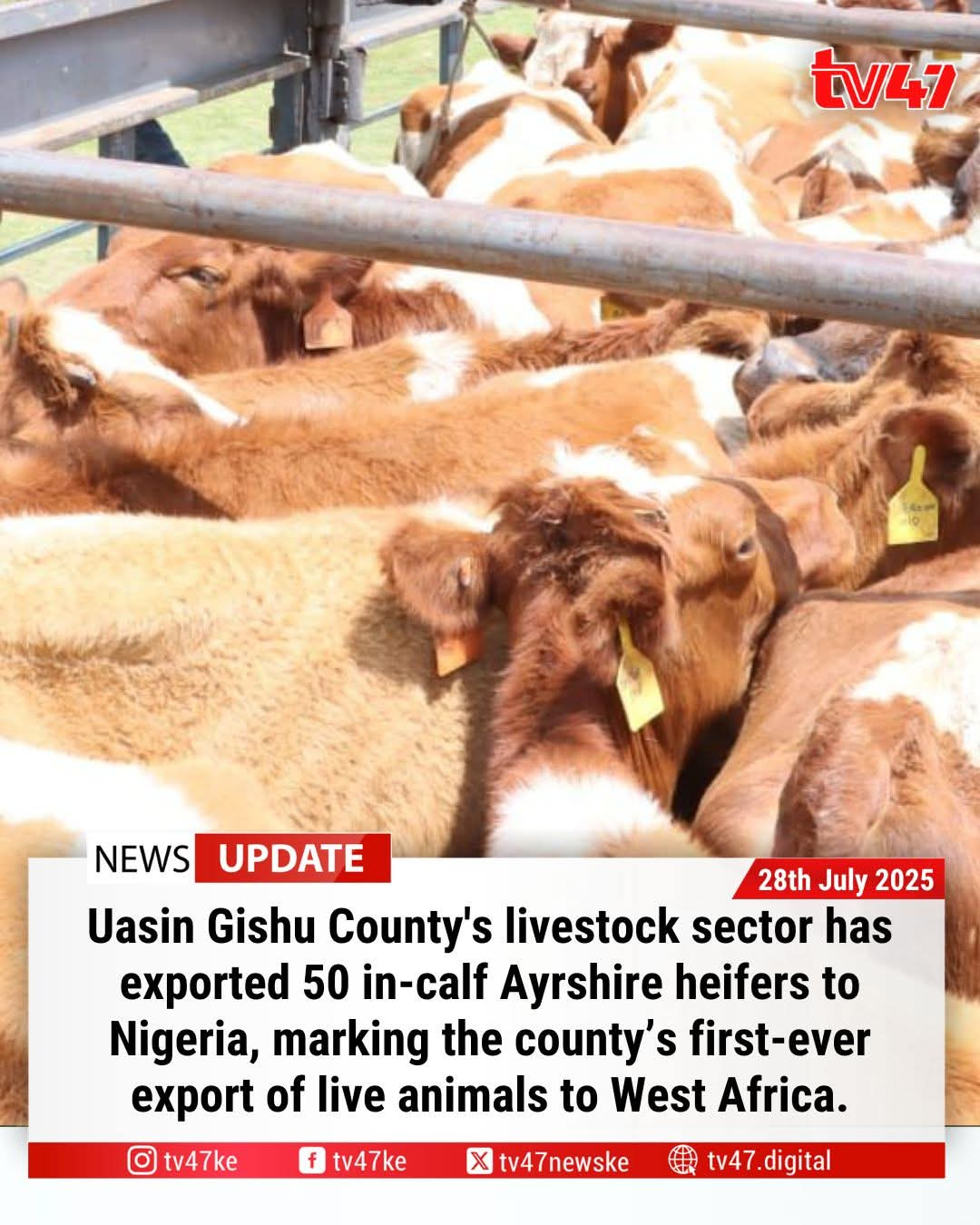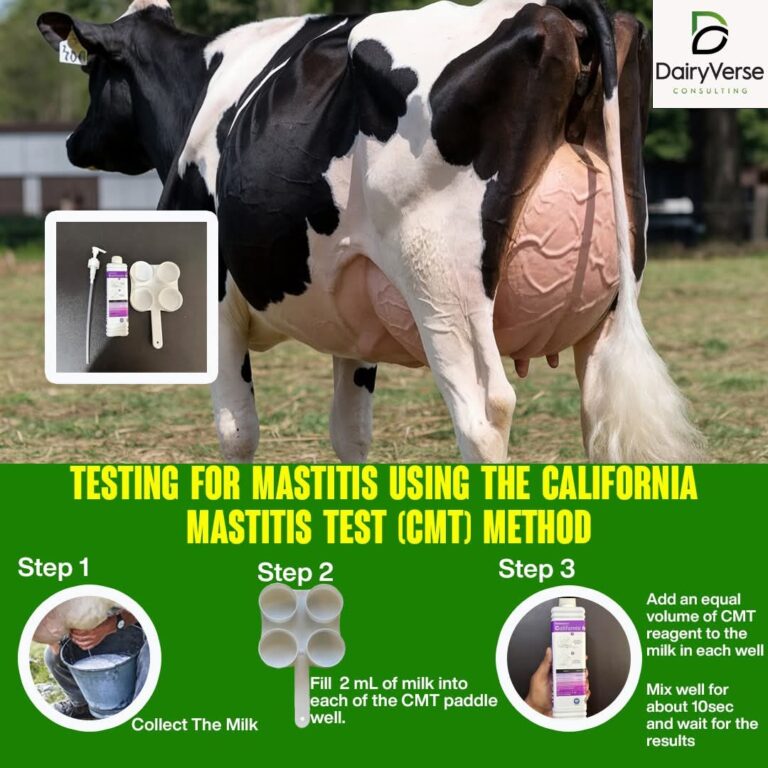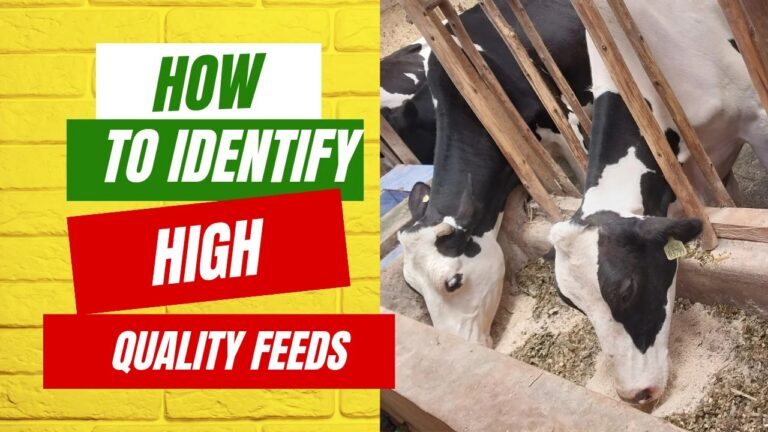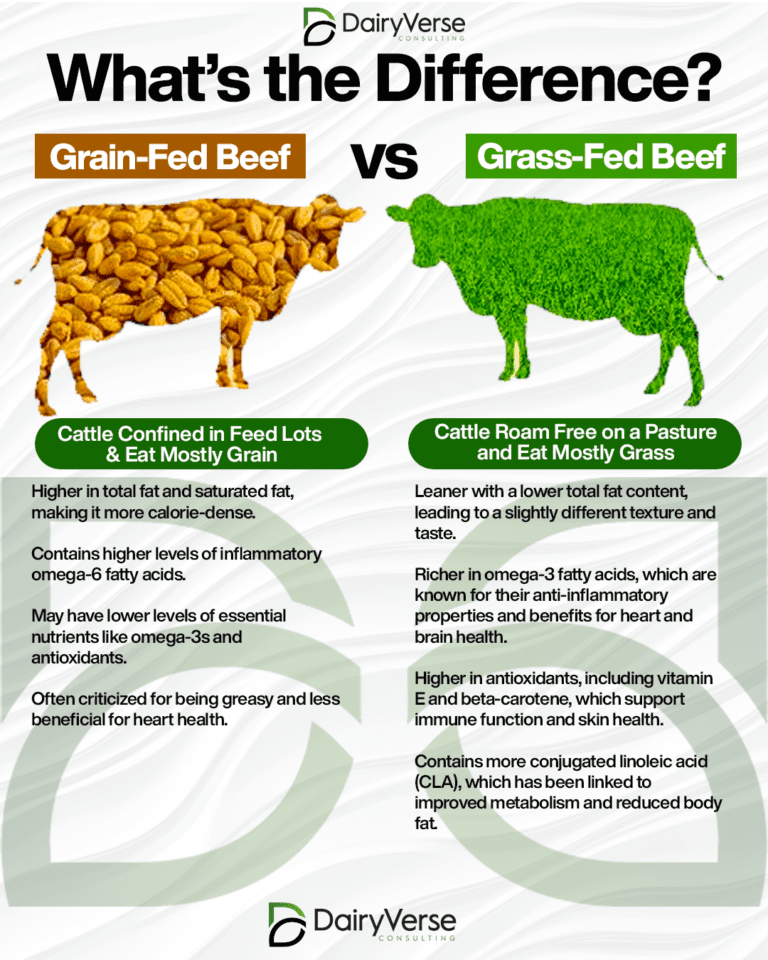Why Ayrshire Cattle Are a Good Choice for Nigeria’s Sahel Region
The Ayrshire breed of cattle can be a valuable addition to dairy farming in Nigeria’s Sahel region due to their productivity and adaptability under managed conditions.
Below are key reasons, followed by a comparison with the White Fulani and other native Nigerian breeds to provide a comprehensive perspective.
• High Milk Production: Ayrshires are known for their high-quality milk, with a fat content of around 4.7% and potential yields of up to 30 liters per day under optimal conditions (average 10 liters/day). This makes them ideal for meeting Nigeria’s growing dairy demand, especially in urban areas near the Sahel, where milk consumption is rising.
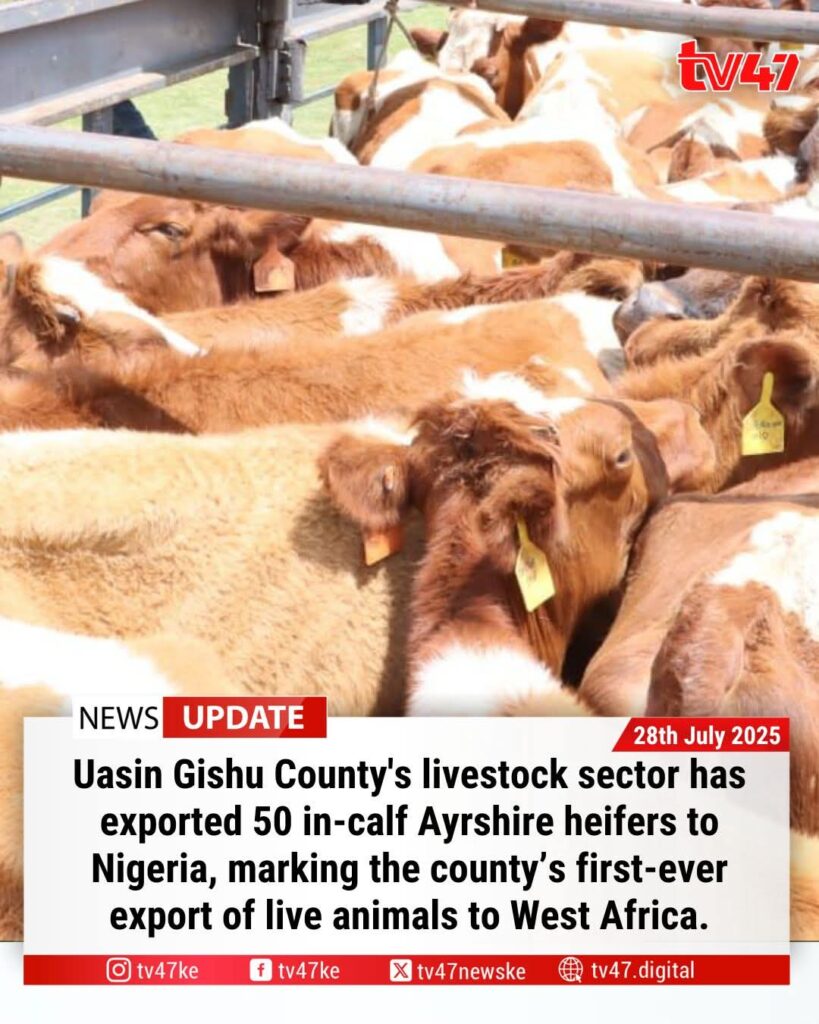
• Moderate Heat Tolerance: Although Ayrshires are Bos taurus cattle, adapted to cooler climates, their medium body size (average 450 kg) and efficient feed conversion allow them to cope better in the Sahel’s hot, dry climate compared to heavier breeds like Holsteins. With shade, water, and proper nutrition, they can thrive, as demonstrated in tropical regions like Kenya.
• Disease Resistance with Management: The Sahel region, particularly northern Nigeria, has areas cleared of tsetse flies since the 1950s (e.g., parts of Kano and Bornu States), reducing the risk of trypanosomiasis for exotic breeds like Ayrshires. While not naturally trypanotolerant, Ayrshires can be raised successfully with veterinary care and trypanocides.
• Crossbreeding Potential: Ayrshires can be crossed with indigenous breeds like White Fulani or Sokoto Gudali to combine their high milk yield with the hardiness and disease resistance of native cattle. This approach has been effective in other African countries, improving dairy productivity while maintaining adaptability to local conditions.
• Efficient Feed Utilization: Ayrshires produce high milk yields on moderate-quality forage, which is critical in the Sahel, where grazing resources are limited during the dry season (January–June). Their medium size reduces feed requirements compared to larger exotic breeds, aligning with the region’s pastoral and mixed crop-livestock systems.
• Longevity and Fertility: Ayrshires are noted for their fertility and long productive lifespans, as seen in Kenyan breeding programs. This ensures consistent reproduction and herd sustainability, with heifers typically producing milk by two years of age.
Comparison with White Fulani and Other Native Nigerian Breeds
To understand the suitability of Ayrshires, it’s helpful to compare them with indigenous Nigerian breeds like the White Fulani, Sokoto Gudali, Muturu, and N’Dama, which are naturally adapted to the Sahel and other Nigerian environments. Below are key characteristics of these native breeds and how they complement or contrast with Ayrshires.
White Fulani (Bunaji):
Description:
A Zebu (Bos indicus) breed, the White Fulani is one of Nigeria’s most common cattle breeds, widely raised by Fulani pastoralists in the Sahel and northern regions. They have a distinctive white coat, long horns, and a hump, with an average weight of 250–350 kg for cows.
– Adaptability: White Fulani are highly adapted to the Sahel’s arid climate, with excellent heat and drought tolerance. They can survive on sparse vegetation and migrate long distances during the dry season, making them ideal for nomadic pastoral systems.
– Milk Production: They produce 2–5 liters of milk per day, significantly less than Ayrshires, but their milk is sufficient for traditional pastoralist needs. Their milk has a higher fat content (around 5–6%), suitable for local dairy products like butter and cheese.
– Disease Resistance: While not fully trypanotolerant, White Fulani have better resistance to tropical diseases than Ayrshires, though they are still susceptible to trypanosomiasis in tsetse-infested areas.
Advantages:
– Their hardiness, low maintenance costs, and ability to thrive in harsh conditions make them a staple for Sahelian farmers. They require minimal infrastructure compared to Ayrshires.
– Crossbreeding Potential: Crossing White Fulani with Ayrshires can produce hybrids with improved milk yield (closer to Ayrshire levels) while retaining heat tolerance and some disease resistance, making them a practical choice for smallholder farmers aiming to balance productivity and resilience.
Sokoto Gudali:
Description:
Another Zebu breed, the Sokoto Gudali is larger than the White Fulani (350–450 kg for cows) and has a shorter hump and horns. It is common in northwestern Nigeria, including the Sahel region.
– Adaptability: Like the White Fulani, Sokoto Gudali are well-suited to the Sahel’s dry climate and can tolerate heat and limited water availability. They are often used in mixed farming systems.
– Milk and Meat Production: They produce slightly more milk than White Fulani (3–6 liters/day) and are valued for both milk and meat, with good carcass quality. However, their milk yield is still lower than Ayrshires.
– Disease Resistance: They have moderate resistance to tropical diseases but are not trypanotolerant, requiring similar disease management as White Fulani in tsetse-prone areas.
Advantages:
– Their dual-purpose nature (milk and meat) and adaptability make them versatile for Sahelian farmers. Crossbreeding with Ayrshires could enhance milk production while maintaining some environmental resilience.
Muturu:
Description:
A small, trypanotolerant Bos taurus breed (150–200 kg), the Muturu is native to southern Nigeria but has been raised in northern regions with tsetse presence.
– Adaptability: Muturu are less suited to the Sahel’s extreme aridity compared to Zebu breeds but excel in tsetse-infested areas due to their natural trypanotolerance, making them a low-risk option in partially cleared zones.
– Production: They produce very low milk yields (1–2 liters/day) and are primarily valued for meat or cultural purposes. Their small size limits their commercial dairy potential compared to Ayrshires.
Advantages:
– Their disease resistance and low feed requirements make them ideal for low-input systems, but they are not a direct competitor to Ayrshires for dairy production.
N’Dama:
Description:
A trypanotolerant Bos taurus breed (200–300 kg), introduced to Nigeria from West Africa, the N’Dama is less common but valued in tsetse-prone areas.
– Adaptability: Like Muturu, N’Dama are better suited to humid or semi-arid regions with tsetse presence rather than the dry Sahel. They have good heat tolerance but require more water than Zebu breeds.
– Production: Milk yield is low (1–3 liters/day), and they are primarily used for meat. Their productivity is lower than Ayrshires for dairy purposes.
Advantages:
– Their trypanotolerance is a significant advantage in areas where tsetse control is incomplete, but their limited milk output makes them less competitive for dairy-focused systems.
Complementary Strategies
• Crossbreeding: Ayrshires can be crossed with White Fulani or Sokoto Gudali to create hybrids that combine Ayrshire milk production with the heat tolerance and disease resistance of native breeds. For example, in Kenya, Ayrshire crosses with Zebu breeds have improved dairy output while maintaining adaptability, a model that could work in Nigeria’s Sahel.
• Management Systems: White Fulani and Sokoto Gudali thrive in extensive pastoral systems, while Ayrshires require semi-intensive or intensive systems with better infrastructure (e.g., shade, water, and veterinary care). Farmers could maintain native breeds for resilience and Ayrshires or their crosses for commercial dairy production.
• Disease Control: In tsetse-free zones, Ayrshires are viable, but in areas with residual tsetse presence, Muturu or N’Dama may be better for low-input systems, or White Fulani crosses with Ayrshires could balance productivity and disease resistance.
Challenges and Considerations
• Climate: The Sahel’s extreme heat and dry season (January–June) favor White Fulani and Sokoto Gudali over Ayrshires, which need shade and water to avoid heat stress. Native breeds require less intervention to survive harsh conditions.
• Cost and Infrastructure: Ayrshires are more expensive to acquire and maintain, requiring housing, supplemental feed, and veterinary care. White Fulani and Sokoto Gudali are cheaper and better suited to low-input systems, while Muturu and N’Dama require minimal resources but offer lower productivity.
• Market Access: Ayrshires’ high milk yield is advantageous if farmers have access to dairy markets in urban centers like Kano. Native breeds, with lower yields, are better for subsistence or local markets with limited infrastructure.
Conclusion
Ayrshire cattle are a strong choice for dairy production in Nigeria’s Sahel region, particularly in tsetse-free zones with adequate management, due to their high milk yield, efficient feed use, and crossbreeding potential. However, native breeds like White Fulani and Sokoto Gudali offer superior heat and drought tolerance, making them ideal for extensive pastoral systems. Muturu and N’Dama, while trypanotolerant, are less suited for dairy due to low yields but excel in disease-prone areas. A mixed strategy—using Ayrshires for commercial dairy and crossing them with White Fulani or Sokoto Gudali for resilience—could optimize productivity in the Sahel.
#dairyfarmingnigeria #dairyfarming #ayrshire #dairyverse #dairyversemarketplace

